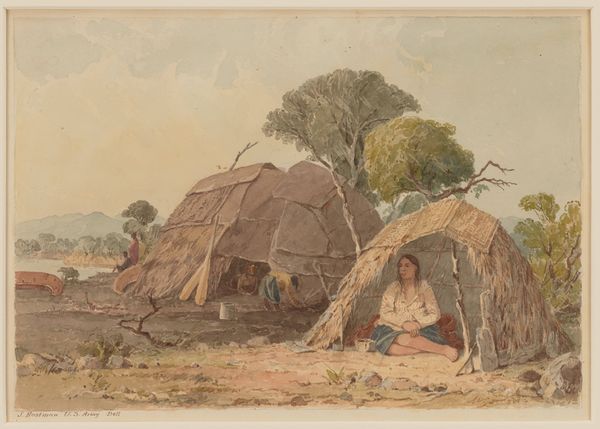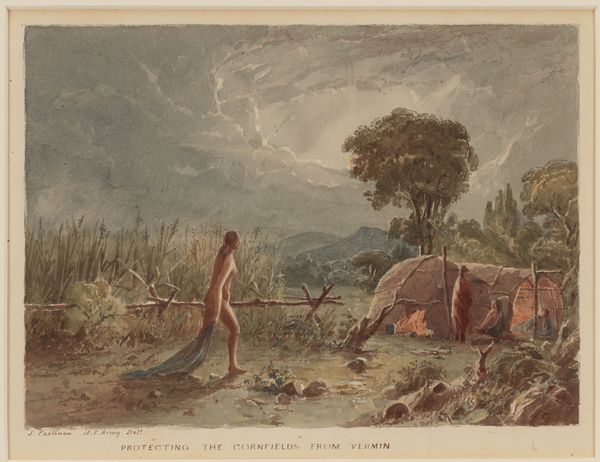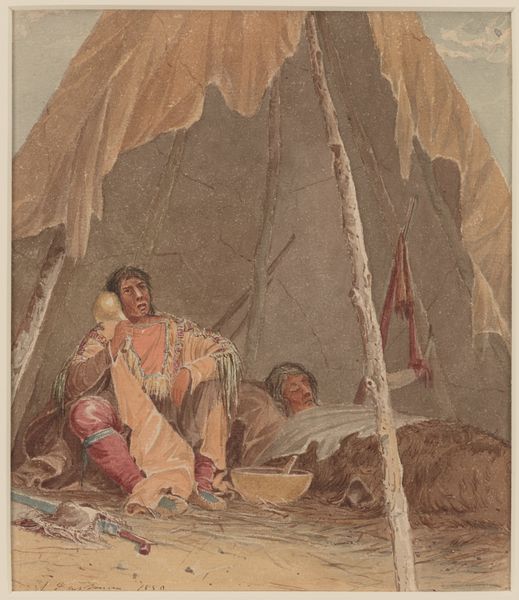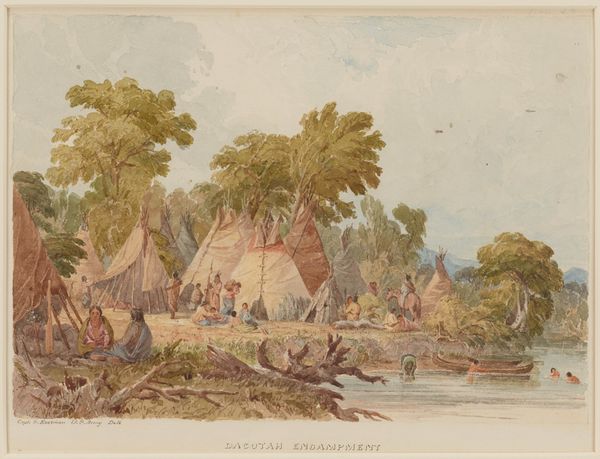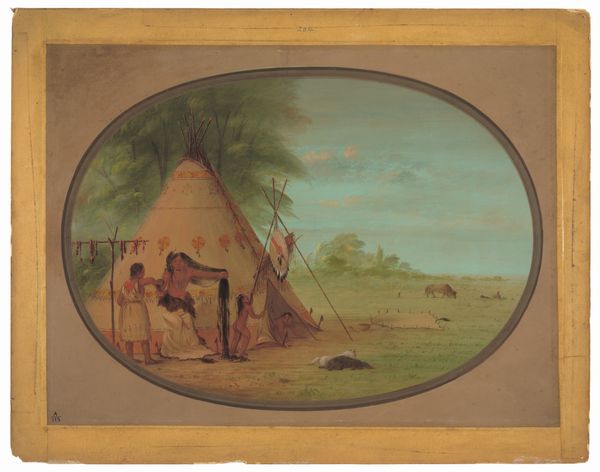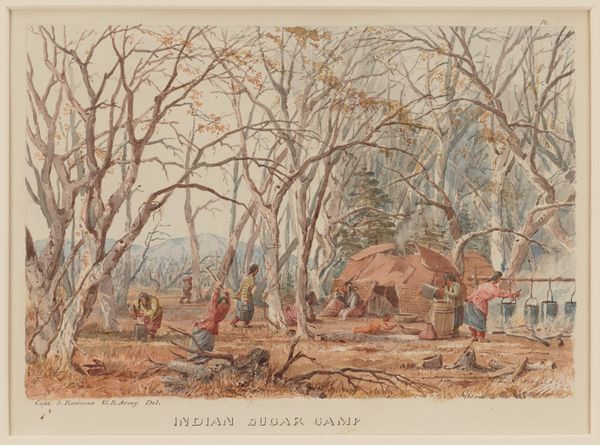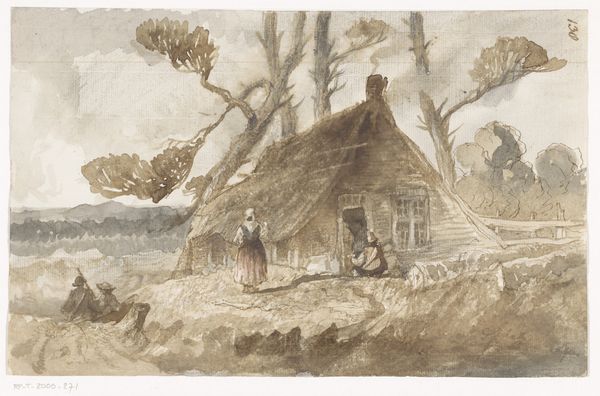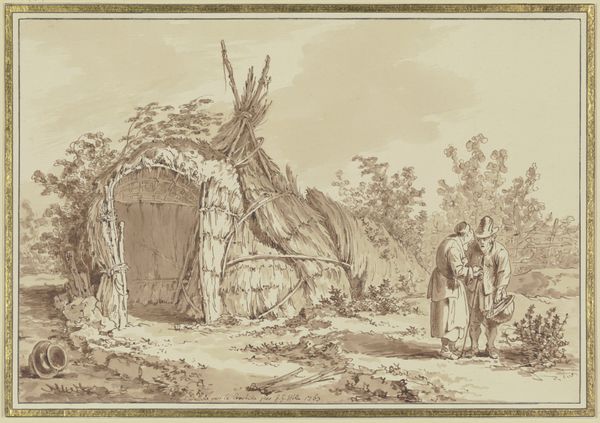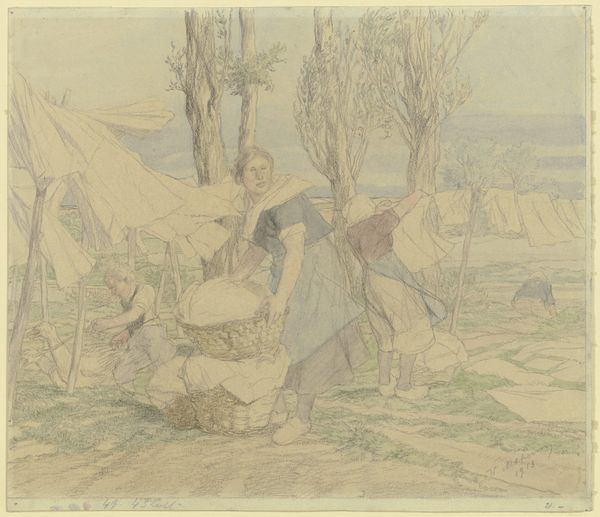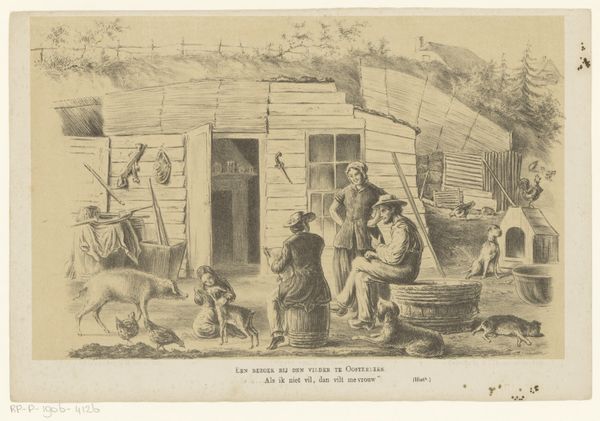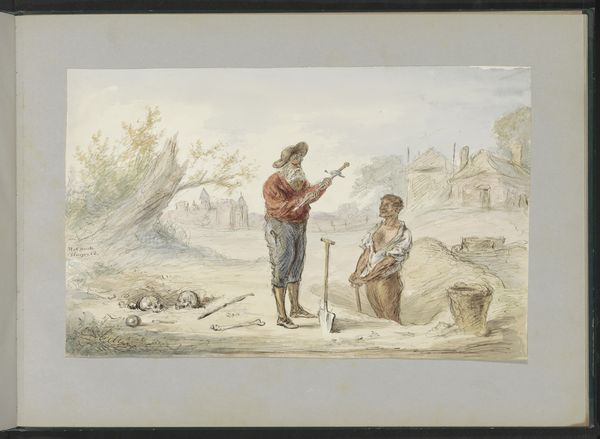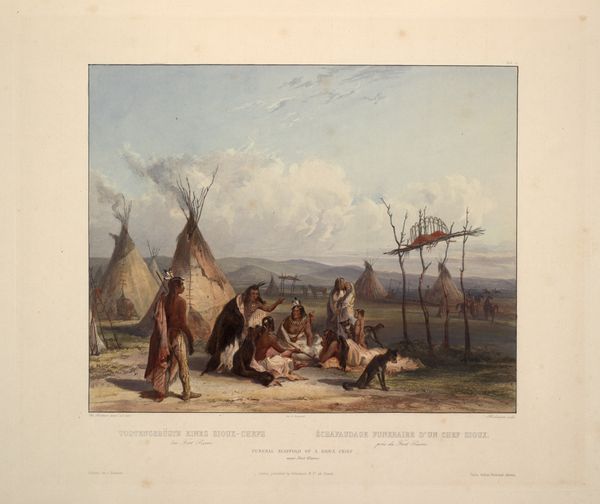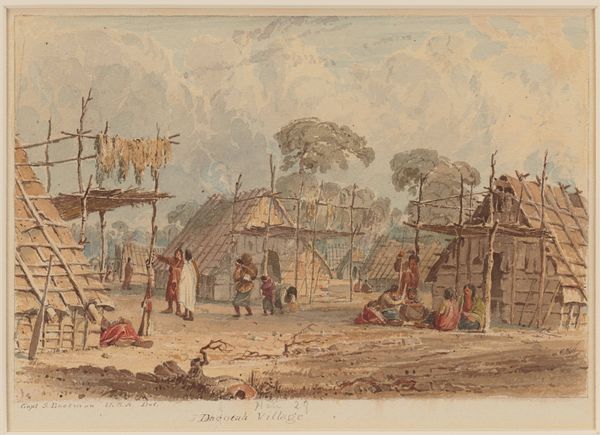
paper
#
narrative-art
#
landscape
#
paper
#
oil painting
#
watercolour illustration
#
genre-painting
#
watercolor
Dimensions: 6 3/4 × 8 3/4 in. (17.1 × 22.2 cm) (image)9 3/4 × 12 15/16 in. (24.8 × 32.9 cm) (sheet)17 9/16 × 21 1/2 × 1 1/8 in. (44.6 × 54.6 × 2.9 cm) (outer frame)
Copyright: Public Domain
Seth Eastman created this watercolor titled "Indian Doctor Concocting a Pot of Medicine." The central figure, the medicine man, is surrounded by objects of ritual and practical significance. Note the pot, the mortar, and the pestle. This is a visual representation of the alchemical process, akin to the European apothecary, but deeply rooted in indigenous knowledge and practice. Consider the act of mixing and transforming natural ingredients. Similar practices appear across cultures and eras; from ancient Egyptian pharmacists to medieval European alchemists. The medicine man’s tools and ingredients represent a connection between the natural world and the spiritual realm, reflecting a belief in the power of transformation and healing. This connection echoes in various traditions where the preparation of remedies is as much a spiritual act as a scientific one. The emotional weight of this image lies in its evocation of trust in the human capacity to heal and nurture, connecting us to ancestral wisdom and the timeless quest for well-being. It is a journey that continues to evolve.
Comments
minneapolisinstituteofart almost 2 years ago
⋮
Like other American artists of the Romantic era, Seth Eastman occasionally idealized Native people. Here he gave a chanting, rattle-shaking healer the form of a classical hero, drawing on the sculptures and paintings he would have studied at West Point, possibly a cast of the Belvedere Torso (1st century C.E., Vatican Museums). Such parallels were meant to satisfy the 19th-century viewer’s longing to escape to a simpler, purer time, while conferring moral virtue on the figure. Other details show Eastman’s gift for observation. The woven basket may be for medicinal herbs, the little five-sided pouch for paint. The creature (maybe a opossum or otter) slung over the post is part of the healing process, as is the bird near the healer’s knee. This watercolor, one of 35 works on paper by Eastman in Mia’s collection, was the basis for an illustration in Henry Rowe Schoolcraft’s massive "Historical and Statistical Information Respecting the History, Condition, and Prospects of the Indian Tribes of the United States" (Philadelphia: Lippincott, Grambo & Co., 1851-57).
Join the conversation
Join millions of artists and users on Artera today and experience the ultimate creative platform.
